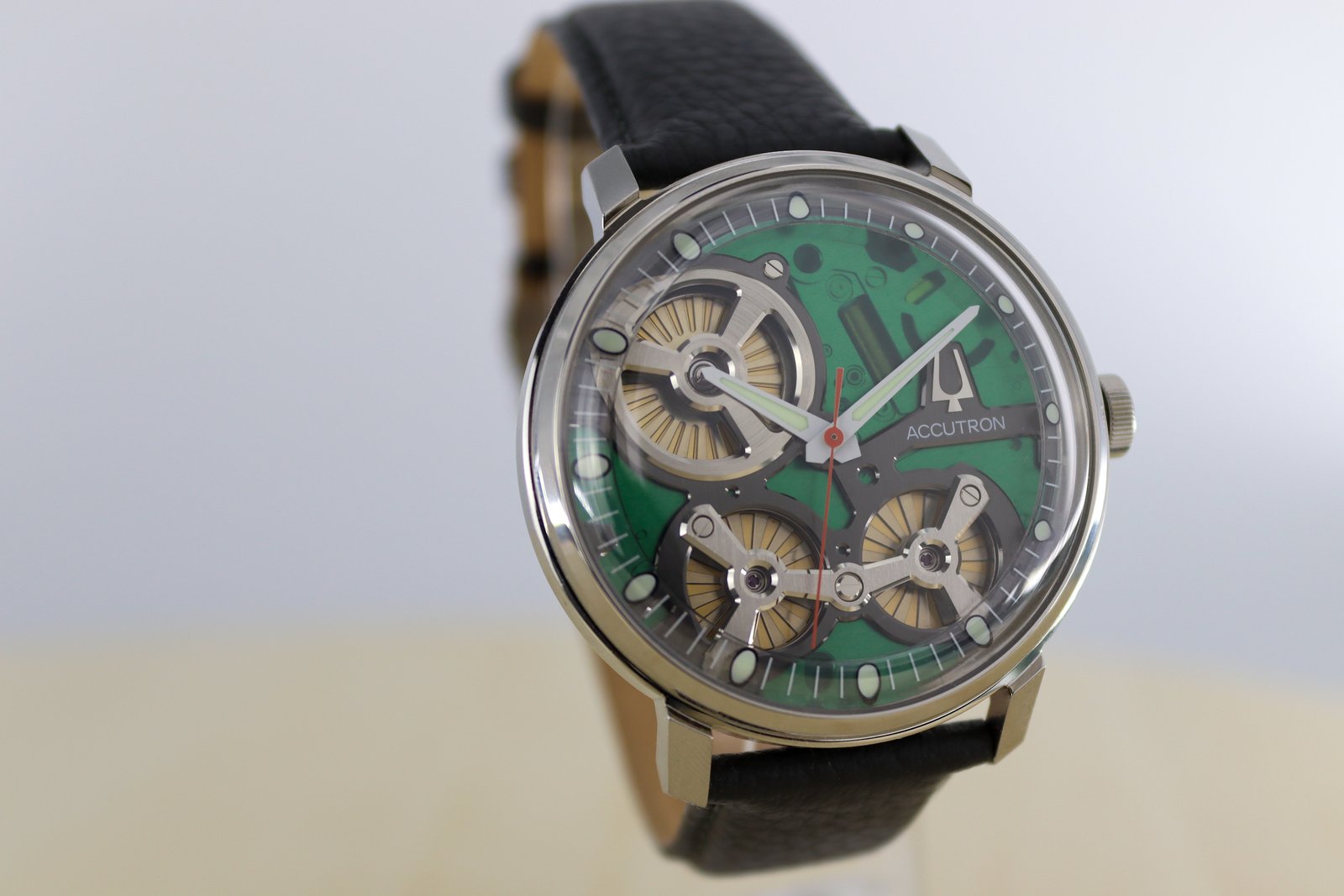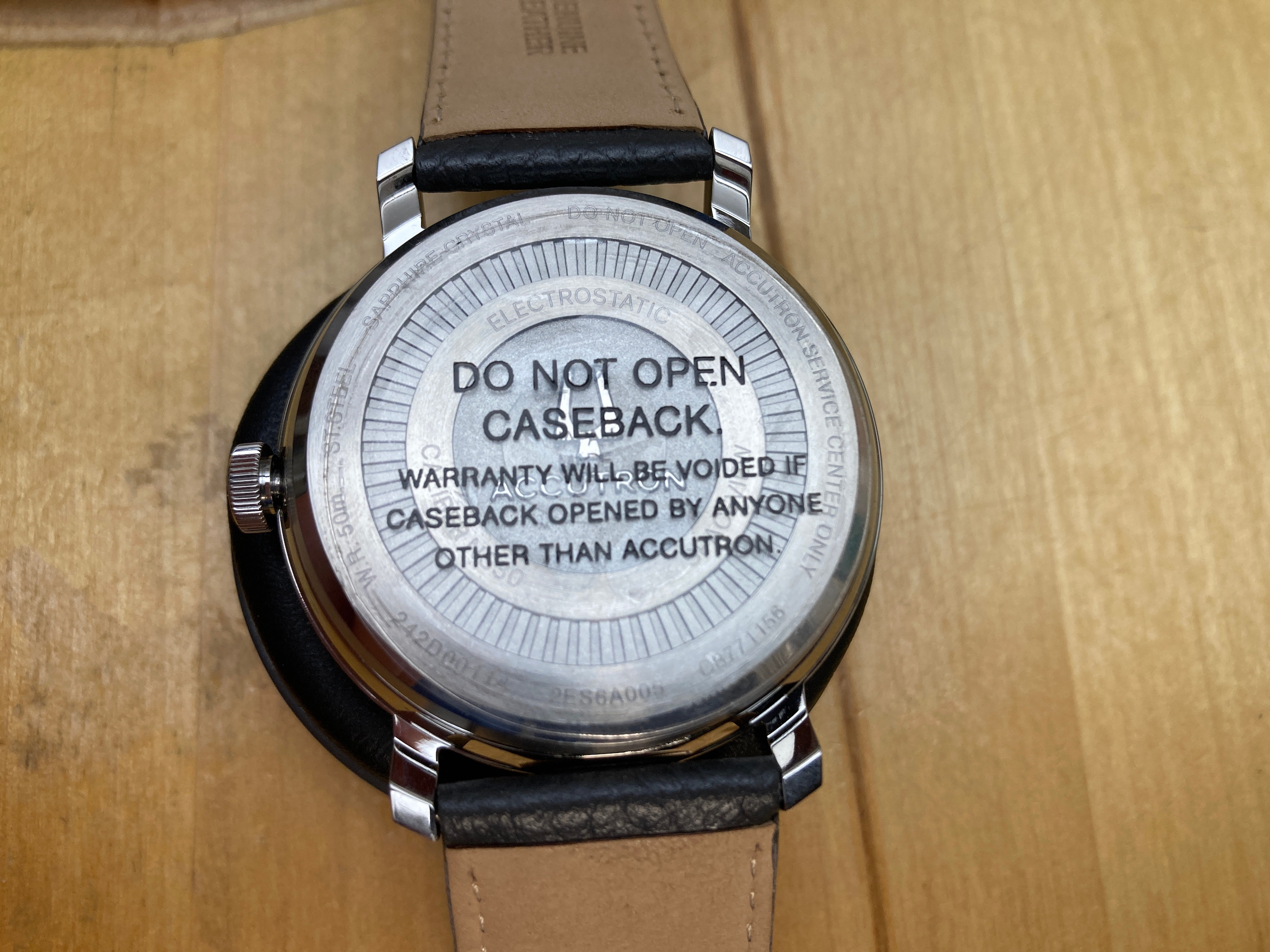If you thought the Spaceview 2020 was a reissue of the Accutron watches from the 1960s you would be wrong.
While the watch takes some inspiration from the original Spaceview watches, it’s completely reinvented. In fact, this reinvention may be what this watch shares most with the original watch. Without diving too deep into the history of the brand and its watches, I think it’s important to at least give a brief summary of the watch that inspired this re-imagination of the Spaceview.
When the original Accutron was released by Bulova in 1960 it was revolutionary. It was the first analog wristwatch that didn’t have a balance wheel with a hairspring. The first electric wristwatches were essentially the same mechanical watches of the previous centuries but driven by electromagnetism. The Accutron was something different. It used a battery to vibrate a physical tuning fork which oscillated at 360Hz. This not only gave the watch its characteristic hum, but it also created a smooth running second hand, and most importantly it allowed the watch to operate at an incredible level of accuracy. The Accutron was advertised to run within 1 minute per month at a time when many watches were only accurate to 1 minute per week. To show off this new technology some models of this watch had a highly skeletonized dial showing the green plastic supports, tuning fork, coils of wire, electrical contacts, and resistors.

The Spaceview 2020 takes design cues from the original watch and features technology completely new to the watch world. I’m going to cover the technology in depth but first some of the important design features. When you first look at the watch the first thing you notice is the green “dial” which isn’t exactly the same color as the original green but probably more in line with today’s fashion cues. The green color is the result of a semi-transparent piece of plastic that covers the mainplate of the movement. While all models show off the technology they do have different dial treatments. The next thing you might notice is the three large discs each with a 3-armed bridge holding them in place. These are the electrostatic generators and motors. They flutter as you move the watch and are eye-catching, although some might say they are distracting. The coil is also visible, but somewhat muted hiding behind the green plastic. The indicators are printed on a clear chapter ring around the outside of the face just like on the original Spaceview. And of course, the second hand, if it is moving, sweeps smoothly around the dial. Unlike the original Accutron watches, however, this new technology does not offer an improvement in timekeeping. The regulating organ in this watch is exactly the same as other quartz watches ubiquitous in the market today.
Accutron’s new tagline is “It’s Not a Timepiece. It’s a Conversation Piece.” and this technical review should hopefully give you the information to make it the nerdiest conversion you have ever had about watches. I’ve combed over patent documents. Analyzed what I see in the watch and posed questions to Accutron’s technical department all in an effort to share as much as I can about this new technology.
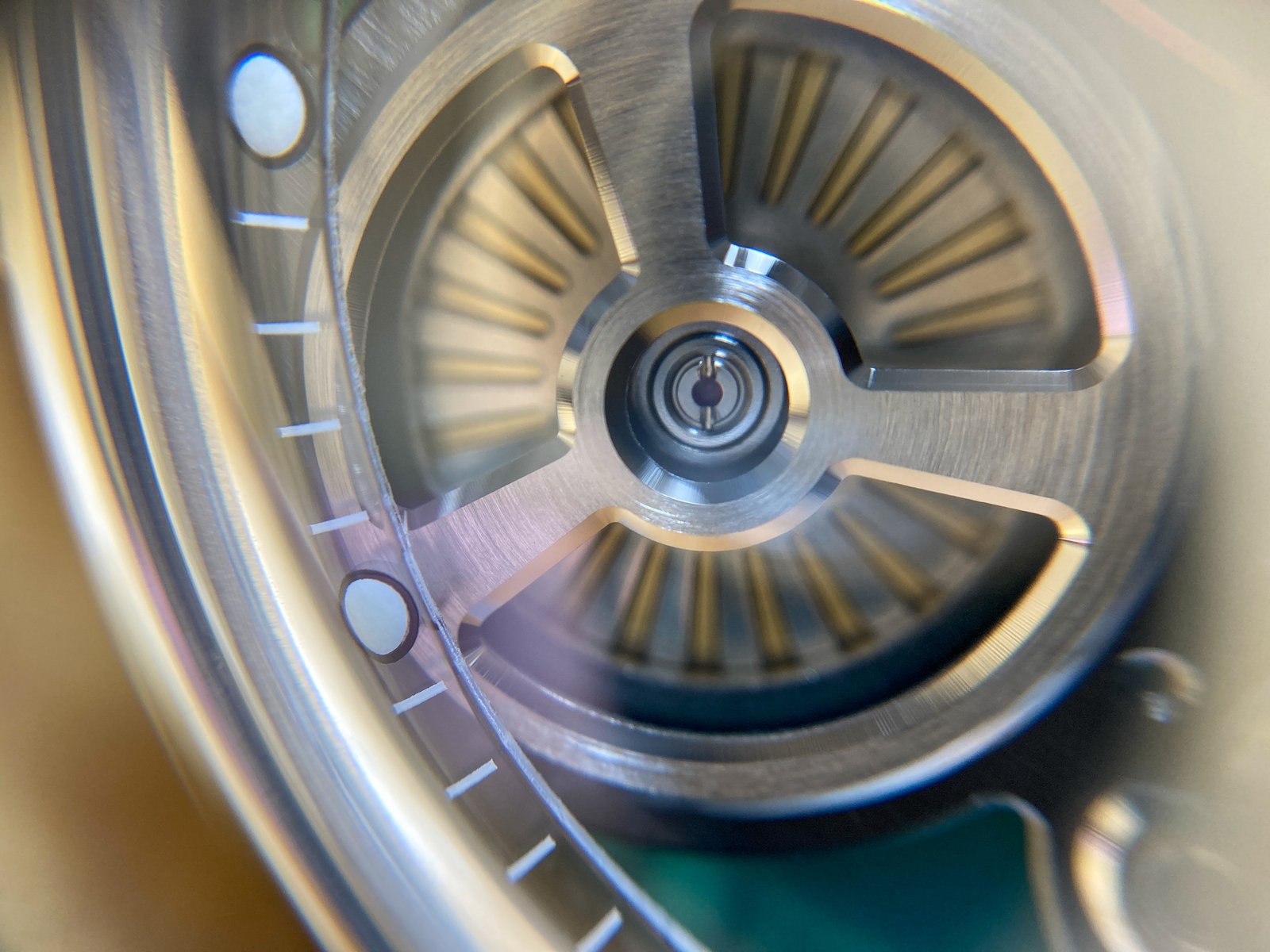
Electrostatic Motor
The Spaceview 2020 is the first time a watch has incorporated an electrostatic motor. The Spaceview 2020 contains caliber NS30 developed by Miyota/Citizen, the parent company of the Accutron brand. This movement uses an electrostatic motor to control the motion of the second hand and a traditional quartz movement with an electromagnetic stepper motor for timekeeping and to control the motion of the hour and minute hands. The electrostatic motor is visible at 10 o’clock.
I’m a mechanical watchmaker, but I will do my best to try and explain what an electrostatic motor is and how it works. If you have ever rubbed a balloon on someone’s head and watched their hair stand on end you know that static electricity is about more than just shocks. Particles can have electric charges, and just like magnets those charged particles can attract or repel each other based on the polarity of the charge. When you rub the balloon on your hair you are transferring electrons from your hair to the balloon. The end result is your strands of hair are now positively charged and the balloon has a negative charge. Since your hairs all have the same charge they now repel each other causing them to stand on end. And since the balloon has the opposite charge the hair is attracted to the balloon.
Using these principles it is possible to build a motor, just like you would with magnets to force rotation. In the case of the electrostatic motor, one way to do this is with a permanently charged material called an electret (this is the magnet of the static electricity world) and by using an electric source to charge another material which forces rotation through principles of attraction and repulsion. While we can use this analogy to understand the basics of how an electrostatic motor works, there are some big differences between an electromagnetic motor and an electrostatic motor:
- A permanent magnet needs to be quite large, but an electret can be created with a thin substrate applied to a disc.
- Magnetism is a force, like gravity, that works in a vacuum. An electrostatic motor on the other hand requires a vehicle to transfer electrons, this can be accomplished with brushes or dry air with free oxygen molecules.
- Electromagnetic motors can be created with low voltage. Electrostatic motors operate on high voltage with low current.
The electrostatic motor in the caliber NS30 produces a smoothly sweeping second hand with no visible ticks. Using slow-motion videography it is possible to see that the integrated circuitry actually produces 12 pulses for every 6 degrees of rotation by the second hand (the amount of rotation required to register 1 second.) Unlike a traditional stepper motor or mechanical escapement there is no stop between electric pulses. When viewed in slow motion you can see that the pulses are more of a synchronizing action that controls the speed of rotation. Rather than a continual start and stop there are only slight variations in the speed of rotation.
You may want to draw some analogy to the Seiko Spring Drive movement which also has a continuous sweeping hand whose speed is controlled by a quartz movement. The Spring Drive motion is generated by a physical spring that forces rotation and an electromagnet is used as a brake to slow the speed of rotation. In the electrostatic motor the rotation is generated by electrostatic charges and the speed is controlled by the rate & duration of the electric pulses generating those charges.
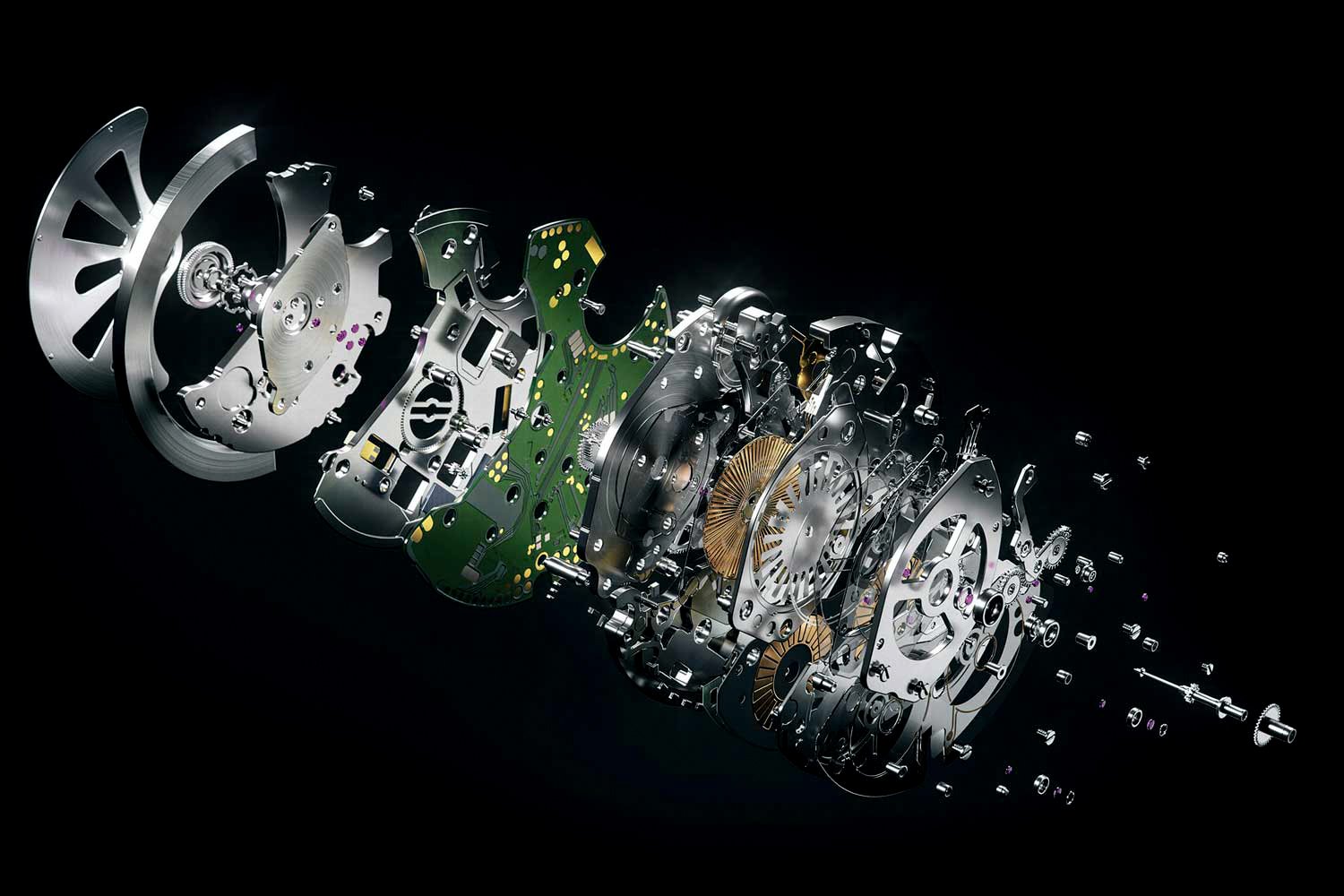
Electrostatic Generators
Another key component of the NS30 movement is the built-in power-generating system. In the same way that an electromagnetic motor can be used to generate electricity when mechanically rotated the same can be done with electrostatic motors. The Spaceview 2020 features two generators visible at 5 o’clock and 7 o’clock on the dial. Patents filed by Citizen/Accutron include descriptions of many different ways to generate electricity but the one they settled on uses a traditional oscillating weight with geared transmission to capture the motion of the person wearing the watch and to force high-speed rotation of the two generators. Even when filmed at 240 frames per second the generators rotate at blurring speeds. They must rotate hundreds of times per second, if not thousands. The electric energy generated by these generators is stored in an accumulator (battery). The oscillating weight has a distinctive sound and feels as it moves around inside the case which is the result of the multiplying gear train that is reminiscent of the Seiko Kinetic as opposed to the dividing gear train that you might find in a mechanical automatic wristwatch.
Power Reserve
This watch has multiple features to extend the power reserve. The first and most prominent is what they call the “Power Save Function.” After 5 minutes of inactivity, the second hand will come to a stop at the 12 o’clock position and rest there until you swing your arm dramatically 3 to 5 times. Upon reawakening, the second hand will begin moving slower than normal until its position aligns with the actual time at which time it begins rotating at the normal speed indicating the correct seconds. During the brief period of slow rotation, the motion of the rotation of the hand also appears less smooth. When you view the action of the electrostatic motor in slow motion during this period of slow rotation you can see this is a result of the modified synchronization process which causes a fluttering action.
The second feature designed to extend the battery life is called the “Energy Conserving Function.” After 10 days of the watch not being worn the motor controlling the hour and minute hand also stops the same as if you pull out the crown. Unfortunately, you have to manually reset the time when awakening the watch from the energy-conserving function.
Accutron claims that the watch is delivered with sufficient energy stored in the accumulator for the watch to operate for two years. There is no indication if this is with the second hand constantly turning or if this is while the watch is in power save mode or the energy conserving mode. The watch is shipped with a spacer to ensure the crown stays out and the energy-conserving function is activated. Despite having what would seem to be a very traditional oscillating weight, Accutron states that “you cannot power this timepiece with an automatic winder used for mechanical watches.” When I asked Accutron for more information about this they replied that “using a watch winder will actually use more energy as it rotates whereas the movement needed to recharge the electrostatic watch is like chopping wood.” Furthermore, the instruction booklet states, “Wearing your timepiece, together with the natural motion of your arm while walking, will maintain power at its optimum. If your timepiece is worn while walking for one hour (about 6,000 steps), energy equivalent to one day running may be created.” This is an oddly specific instruction that leads me to believe that the specific motion of your arm swinging while walking is required for charging. I would like to confirm what it is about this specific motion that is necessary for proper charging as you can visibly see the electrostatic generators spinning when the watch is on the winder. When I mentioned this to Accutron, they simply replied that I “shouldn’t be using a watch winder at all as it will not charge the watch.” I couldn’t help but experiment a little further. My first hypothesis was that the motion of the winder might prevent it from enabling the power save function and that with the second hand running the watch would consume more energy than it generated. However, upon testing this theory I determined that the regular motion of the winder was considered inactivity by the IC and the second hand stopped after 5 minutes. In fact, the watch would go into power-saving mode when I was writing this article at the computer or working on watches at the watchmaker’s bench. It seems to require that same chopping motion to register activity to keep the second hand moving. Further experimentation would be necessary for any conclusions, but because I couldn’t open the watch, I am unable to measure the electrical generation and determine whether any meaningful charge is being stored in the accumulator from the motion of a watch winder.
It may be possible that even though the generators are spinning they don’t always generate electricity or there may be other reasons why Accutron does not want the watch placed on winders. With my basic and inadequate understanding of electrostatic generation here are some possible reasons why this may be the case. I welcome any feedback as to the plausibility of these theories:
- Electrostatic generators constantly move electrons from the supply source to neutral. In a closed system like this tiny wristwatch with no external source for electrons, changing the direction may correct an imbalance that ultimately builds up.
- It may even be that it is essential for the direction of rotation of the electrostatic generator to constantly shift because too much rotation in a single direction will cause the electret to lose its charge.
- Maybe the generators need to spin at a very high speed only obtainable when swinging your arm.
- Perhaps the constant rotation will simply cause unnecessary wear on components.
The inclusion of two levels of power conservation on this watch should be a clear indication of two things: First, the electrostatic motor has a high rate of consumption which would drain the watch too fast if it was constantly running. Second, the generator doesn’t operate efficiently enough to do much more than provide and maintain power. If you are extremely active you may generate more energy during the course of a day than what is consumed, but if you have a desk job, you probably are not generating very much extra.
I have two more things to say about the power reserve. One of the patents filed by Citizen/Accutron specifically describes a watch “with an electrostatic induction generator designed to enable a user to check the state of power generation.” This patent further states that the visible generator on the face of the watch “creates interest in the user over the state of power generation thanks to the design, so the user can be prompted to continually generate power . . . while learning what kind of movement enables the rotary member to efficiently rotate when carried.” This further supports the idea that this movement consumes a high amount of energy and the user needs to pay attention to it to make sure they are active enough to maintain the power.
The last point about the power reserve is that the standard quartz movement which controls the hour and minute hands is equipped with an energy conservation function that brings it to a stop after 10 days. It is common in watches with only two hands to tick once every 5 seconds or even every 20 seconds. These watches consume much less electricity (sometimes only 20% as much) and have much longer battery life. The Spaceview 2020 by contrast ticks every second. It is possible they could have done as much to conserve power by changing the design of the base movement instead of stopping the watch after 10 days removing the need to reset the hands when you pick it up after not having worn it for a couple of weeks.
Other Technology
It might seem like enough for Accutron to have that great sweeping seconds hand, an electrostatic motor, and electrostatic generators, but in order to accomplish all of this they had to incorporate other interesting technology into this watch.
First, we have to think about what it takes to be able to stop the second hand and then reposition it in exactly the right place. This isn’t necessarily new technology, but interesting, nonetheless. Many years ago I wrote about indexing technology when I described the function of a radio-controlled Junghans wristwatch. In much the same way as this watch, it would synchronize the second hand after receiving a radio signal. It accomplished this with overlapping solid gears with a single hole in them and optical sensors. These sensors would inform the IC when the hands were aligned at the 12 o’clock position. When synchronizing with the radio time signal the hands would align at the top and then rapid pulses would be delivered to position the hand in the correct spot.
In some ways synchronization is even easier in this watch because there is no built-in synchronization for the hour or minute hand, only the seconds hand. I suspect there is an optical sensor that registers when the hand is at 12 which informs the IC as to when to stop the motor when the watch enters the power save function. The watch continues to maintain the seconds on a counter within the watch’s circuitry. When the watch is restarted a calculation is performed to determine how long the watch must run slowly before starting back up at normal speed. The position can then be confirmed when the seconds hand reaches the 12 o’clock position again.
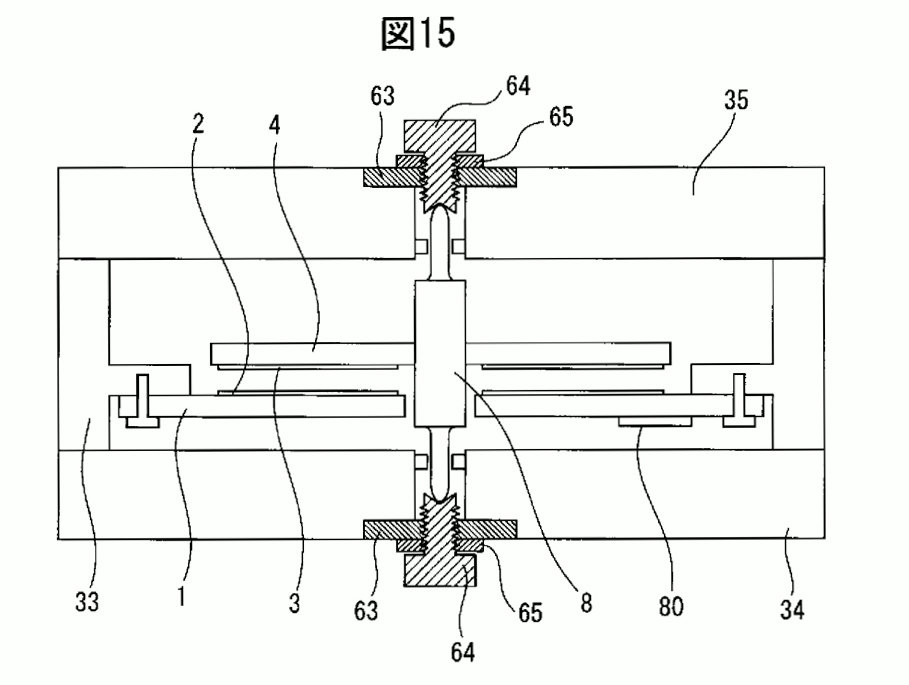
Next is something I didn’t notice at first but which I identified after reading through patent documents. The tolerances in the spacing between the plates of the electrostatic motor are very critical and the application of substrates to these plates can result in different thicknesses. Accutron had to incorporate novel methods for adjusting the positioning of these plates. This is accomplished by using micrometric adjustment of the shock jewels in which the axles of the plates ride. With the turn of a screwdriver, they can easily adjust the position changing the gap between the plates. You can see the slot for a screwdriver at the center of the electrostatic motor at 10 o’clock for making this adjustment.
Another interesting feature is that the charging film that is part of the electrostatic motor and generators is photosensitive. Normally they could just hide this behind the dial of the watch and not worry about it, but because they wanted these elements exposed, both for their visual interest and to help the user recognize the watch is working when the watch is in power save mode you will see, if you look carefully, that there is in fact a polarized film above these elements to filter out certain wavelengths of light.
After Sales Service
I’m a watchmaker so I always like to think about what new technology means for the watchmaker, and by extension for the customer when service is needed down the road. The back of the Spaceview 2020 is engraved “DO NOT OPEN ACCUTRON SERVICE CENTER ONLY” and a sticker has been applied with the text “DO NOT OPEN CASEBACK. WARRANTY WILL BE VOIDED IF CASEBACK OPENED BY ANYONE OTHER THAN ACCUTRON.”
As a watchmaker, I’m used to the major brands wanting to control the lifecycle of the watch and limit access to parts and service by independent watchmakers but Citizen/Bulova/Accutron has not traditionally operated by these policies. This is more of a policy that Swiss brands follow. Now, I really wanted to see the inside of this watch, and I knew that this is new technology they wouldn’t want people to mess with, but I could also tell there was something different about the case construction of this watch and when I inquired if I could open the watch they came back with a legitimate response of which watchmakers and consumers alike should take note:
Electrostatic Motors need a special environment in which to operate. The air must be completely free of any humidity and even the tiniest speck of dust could cause havoc inside these movements. You may think that most watches are assembled in a “clean room” environment, but you would be wrong. They are assembled in clean rooms, but not the kind of “clean room” that is free of dust and static where special clothing is worn as you see in an Intel commercial. In the case of this watch, however, that is precisely how these watches are assembled. Allowing humid air into the watch will greatly decrease the efficiency of the motor and generator. The tiniest speck of dust will be attracted to the electret and foul up things.
This is one time when I recommend heeding the warning label. As much as you want to see this beautiful machine. Leave the caseback in place.
The watch has only been on the market for 2 years, and only time will tell how well they maintain power in their accumulators. The daily wearer will probably get long use out of these watches, but it is only a matter of time until some of these in the hands of occasional wearers have exhausted accumulators and the seconds hand comes to a rest at 4 o’clock. Without the ability to use a watch winder to charge them up and with it requiring a 1-hour walk to generate 1 day of power reserve these watches will need to go back to Accutron for service and the capacitor will probably need to be replaced or charged externally of the watch. The good news: even the capacitor is covered by Accutron’s 5-year warranty.
All-in-all, I’m the kind of guy who loves to learn about new technology. I’m fascinated by it. While only time will tell how durable this technology is, we can appreciate the innovation and admire its beauty because this really is an attention-grabbing conversation piece.
The Accutron Spaceview 2020 (Ref. 2ES6A005) retails for $3,450.
Learn more at Accutron.
References:


